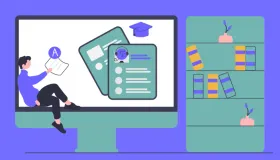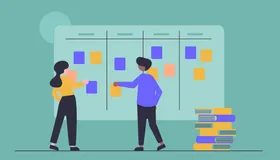Why the Listening Section is Important for Your Overall Score
The PTE Listening section plays a vital role in your overall score as it assesses comprehension, accuracy, and attention to detail.
Since it contributes to both Listening and Writing scores, excelling in this section can significantly boost your overall PTE Results.
Read more:
PTE Listening Question Types Explained
Daily PTE listening practice improves performance in tasks like Summarise Spoken Text and Fill in the Blanks. Many online platforms offer free PTE listening practice tests to help students prepare effectively.
The PTE Listening practice consists of various question types designed to assess your ability to understand spoken English, identify key details, and apply reasoning skills. Below is a breakdown of the major question types along with tips and examples.
Read More:
Download 15 Free PDFs for PTE Listening Practice!
Boost your PTE Listening practice with our 15+ free downloadable practice PDFs, designed to help you master different question types. Students can find a PTE academic listening practice test free with answers to evaluate their performance.
These PTE practice tests come with recordings and answers, Engaging in PTE listening practice with transcripts can enhance comprehension and accuracy.
Download now and start practising for a higher score!
Listening Practice Test 5
Listening Practice Test 6
Listening Practice Test 7
Listening Practice Test 8
Listening Practice Test 9
Listening Practice Test 10
Listening Practice Test 11
Listening Practice Test 12
Listening Practice Test 13
Listening Practice Test 14
Listening Practice Test 15
Listening Practice Test 16
Top 5 PTE Listening Tips for 2025
Taking a PTE academic listening practice test free is a great way to understand the exam pattern. To boost scores, candidates should regularly attempt a PTE academic listening practice test free online. Here are five essential tips to improve your performance.
Common Mistakes to Avoid in PTE Listening Section
Taking a PTE listening full practice test helps candidates assess their strengths and weaknesses. Avoiding common mistakes in PTE Listening practice can significantly improve your score and overall performance.
- Ignoring Instructions – Each question type has specific rules; not following them can cost points.
- Not Taking Proper Notes – Writing too much or too little can lead to missing key information.
- Missing Context Clues – Not paying attention to tone, keywords, and sentence structure can result in wrong answers.
- Mishearing Words – Not practicing with different accents can lead to confusion in Fill in the Blanks.
- Guessing Without Logic – Random guessing without eliminating wrong choices can lower accuracy.
Read More:
How Can Leap Support You?
Maximise your PTE exam success with Leap! Access personalised PTE exam preparation resources and practice materials to strengthen your skills.
Start your journey with us today and gain the confidence you need for test day!






